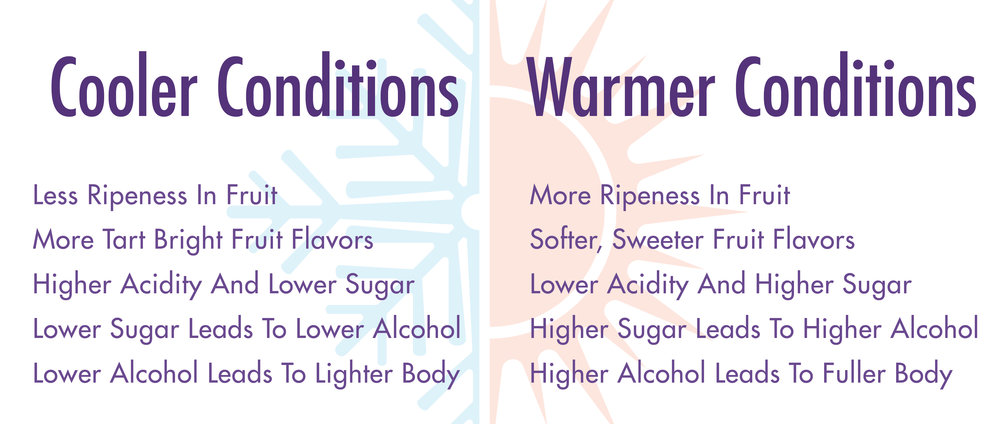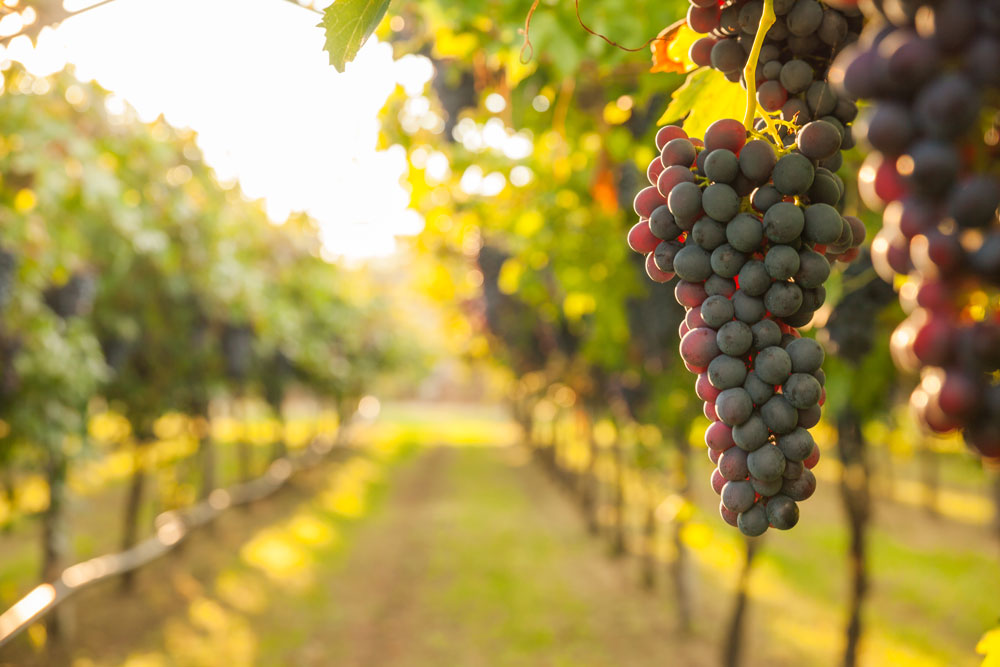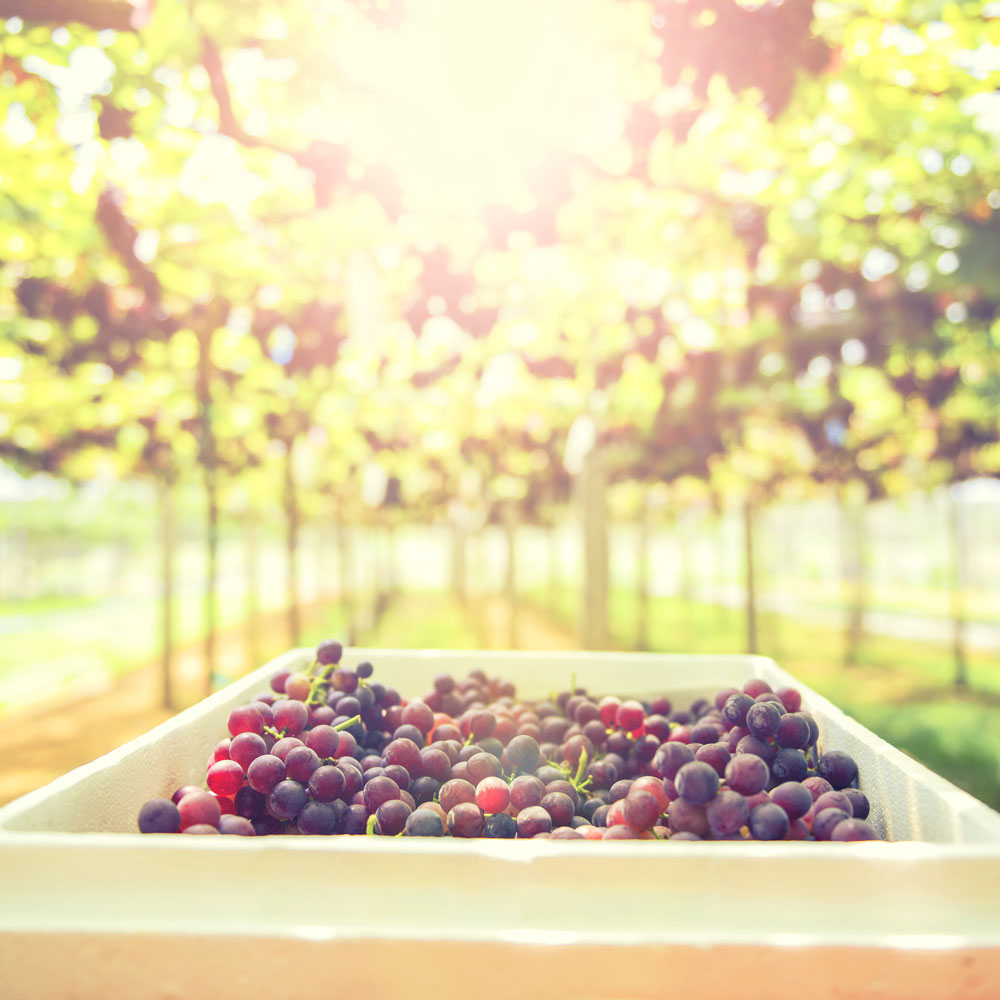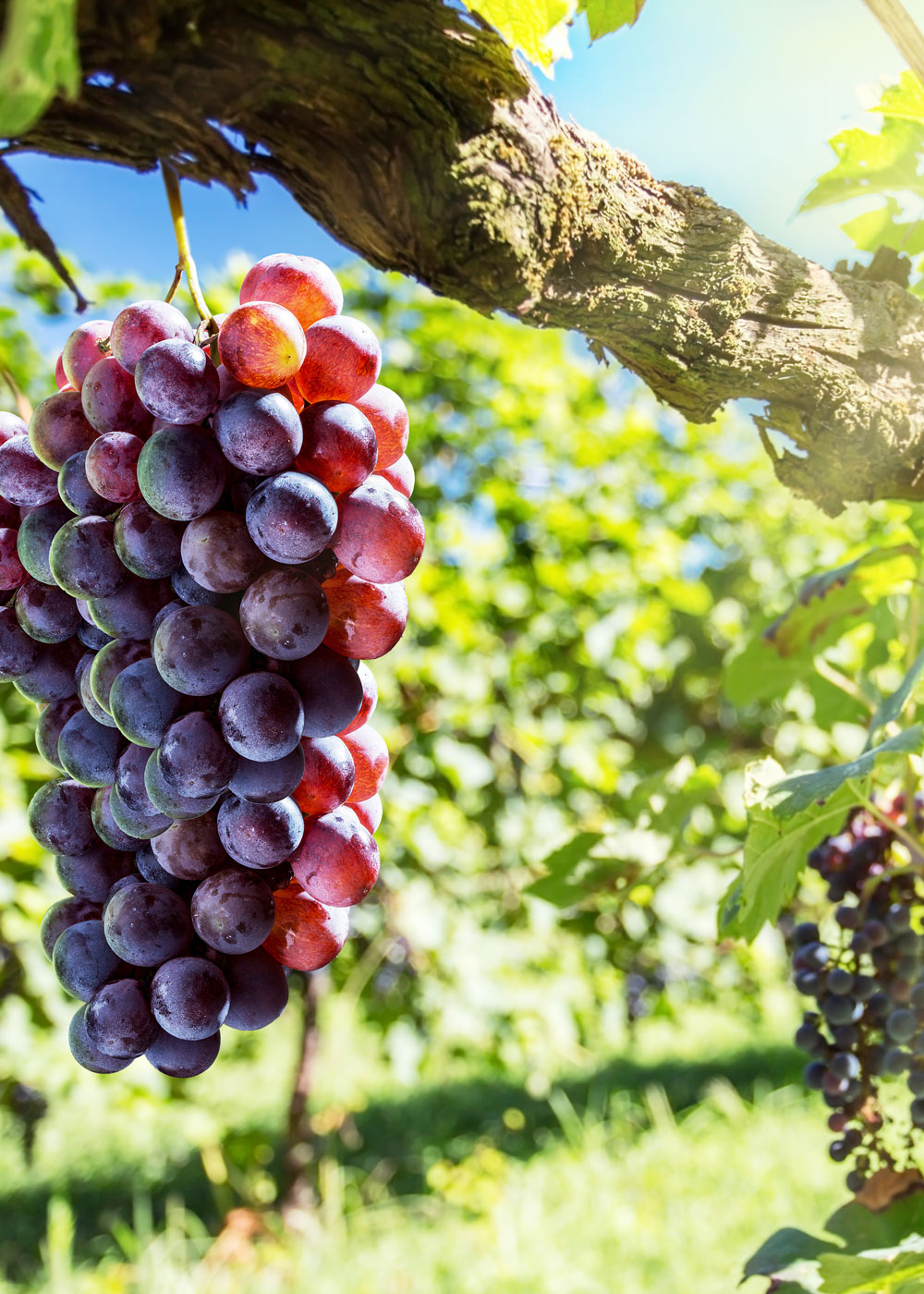How many times have you heard discussion about the weather in a particular year or the climate in a particular region? Sure, we know that wine is affected by these things, but how? If you hear that your favorite source for wine just had a warm year or a cold vintage, what does that mean for you? This post will provide an overview of climate and weather and how they affect the wines you love.

Weather vs. Climate

Basically, the word “climate” refers to the general conditions in a given place over a long period of time, while the term “weather” refers to temporary conditions that might or might not be unusual. For example, German wine regions generally have a cool climate but can still experience hot weather over the course of days, weeks, or months.
Many of the regions in Europe have relatively cool climates, so some people roughly associate “cool” with the term “Old World” and “warm” with “New World.” Of course, there are exceptional climates and weather patterns all over the world, so those associations should be taken with a grain of salt.
Cooler Conditions

In cooler climates and weather, grapes have more difficulty ripening – a concept discussed more fully in our ripeness post. Less ripe grapes have high levels of acidity, giving them a tart taste which many people – including me – perceive as pleasant and refreshing, but others might legitimately find sour and harsh. These grapes also have lower sugar levels, which results in drier wines with lower alcohol and lighter body. If you like your wines light, crisp, and dry, you might enjoy tasting wines from cooler regions and vintages. The ripeness of grapes is also tied to the amount of sunlight they receive throughout the growing season, regardless of temperature. That’s one of the reasons prolonged rain can be a problem in some areas – in addition to the lower temperatures often associated with rainy weather, the sunlight is also reduced, leading to grapes with less ripeness.
Another possible result of wet conditions is the watering down of the grape juice. When a grapevine has plenty of water, the grapes may end up with excessive moisture in them, leading to a diluted raw material for the wine.
Warmer Conditions

In warmer weather and climates, grapes ripen more easily, leading to lower acidity, higher sugar levels, and darker color. The higher levels of sugar allow for greater levels of alcohol, which makes the wine more full-bodied. It’s important to note that higher levels of sugar in the grapes doesn’t mean that wines made from those grapes need to be sweet. You can still ferment sweet grapes into a dry wine, but that wine will have higher levels of alcohol. Strangely, even very dry wines with high alcohol tend to seem a little sweet. It’s as though our brains recognize high alcohol in dry wine as the product of high-sugar grapes. If you like wines full, soft, and fruity, you might want to try those from warmer climates and vintages.
To find your next bottle of quality wine, visit us online at WTSO.com!



